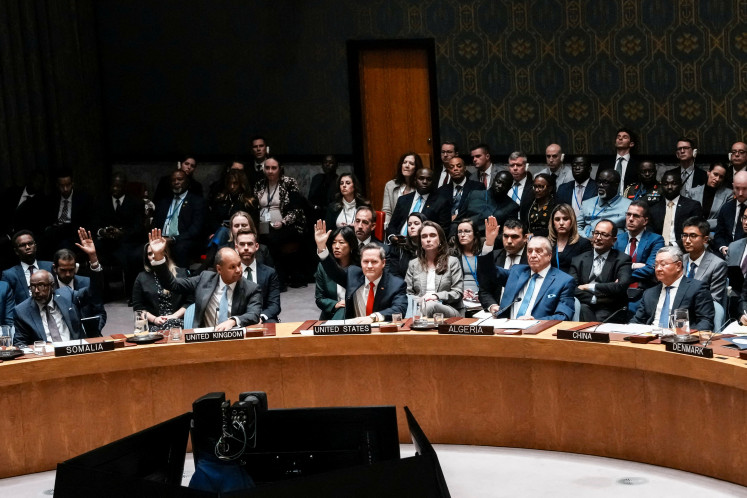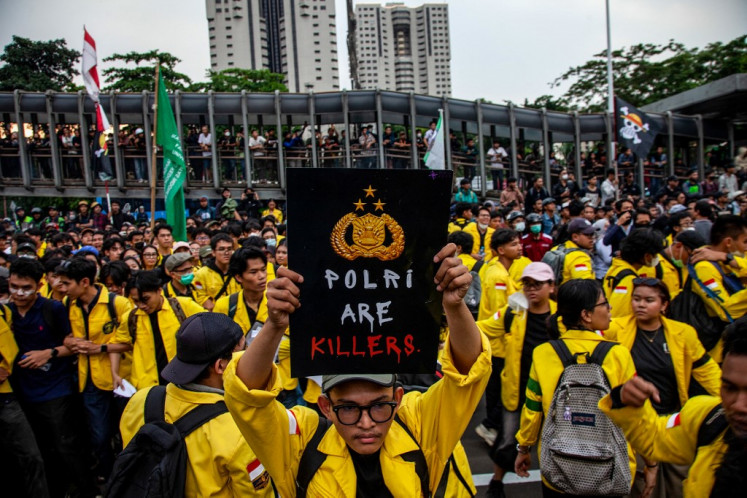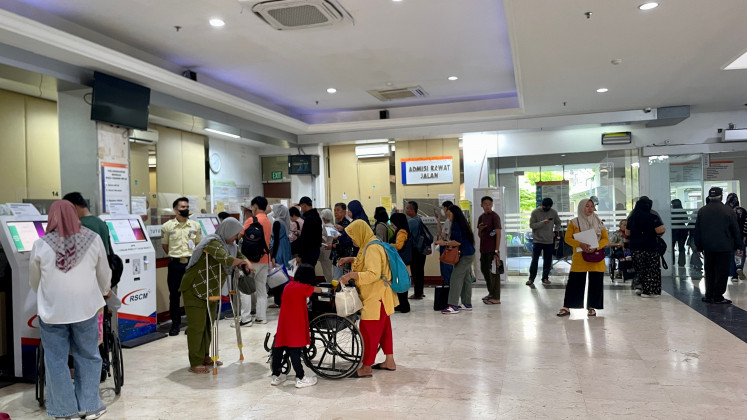Popular Reads
Top Results
Can't find what you're looking for?
View all search resultsPopular Reads
Top Results
Can't find what you're looking for?
View all search resultsGeothermal energy in SBY's second term
With SBY elected for a second term, his program for electricity development must be his top priority
Change text size
Gift Premium Articles
to Anyone
W
ith SBY elected for a second term, his program for electricity development must be his top priority. For his second term, he has no choice but to have a geothermal-based power plant as the core of this program. An abundant source of geothermal energy and its cleaner electricity generation method justify the choice.
Geothermal production produces significantly less CO2 than coal fired production. If 5,000 megawatts (MW) from a geothermal-based power plant is the target of SBY's second-term, then this will conservatively reduce CO2 emissions by 82 million tons.
The economic cost of not meeting this target is tremendously high. Assuming a plant load factor of 90 percent, with the cost of coal at US$55 per ton, a 5,000 MW geothermal-based power plant would represent an economic gain of roughly $750 million annually, calculated by the value of the 13.5 million tons of coal saved. In addition, in the second term SBY stands to gain substantial carbon credit benefits from the amount of CO2 that would be saved.
To meet the investment needs, in the second-term SBY has to rely primarily on private investment. Presidential Decree No. 67/2005 provides regulations on entering into contracts with Independent Power Producers (IPPs) in infrastructure. Of course, further refinement of the decree needs to be made to include geothermal-based IPP in the domain.
SBY must also address obstacles. While as much as 27,000 MW are reportedly still available, only around 1,000 MW are now installed. Attempts to fast-track the development of this potential during his first-term have been, at best, disappointing because no investments were made after companies acquired steam-field concessions. Over 3,000 MW in existing concessions (brownfields), of which over 1,200 MW have already been confirmed through resource drilling, are yet to be developed.
A new attempt is now being made to bid out, through local governments, approximately 2,000 MW of greenfield projects in over 20 locations. The problem of these bids, as in the existing not developed concessions, is that the ultimate off-taker (PLN) of energy coming from these fields is barely involved in the process. Without the international standard Power Purchase Agreement (PPA), the winning bidders and existing concessions holders really have nothing to look forward to in terms of attracting funds for development.
A second major obstacle is the fact that in the view of many potential bidders, the amount and quality of data on steam resources is questionable. The data is simply insufficient to make any meaningful bids upon. Assuming the data was sufficient to commit a specified level of capacity, the next major obstacle would be to finance the project under terms and conditions that would be beneficial to PLN and to consumers.
Because of the higher initial capital cost, the pressure for long-term financing is greater for geothermal projects than for coal-fired projects. Moreover, since PLN's end-consumer tariffs are in local currency, financing these projects using foreign currency financing will, again, put great pressure on PLN. Thus, both the tenor and the currency must be addressed if the development of geothermal projects will advance at a pace the second-term SBY desires.
The strategy is then to expedite the implementation of the program by focusing on the brownfield negotiations, while developing the tendering process for the greenfields and to conducting the biddings as soon as possible. In either case, however, the initial crucial step of preparing the international standard PPA will be common to both the brownfields and greenfields.
The brownfields must be given priority as these are the working areas with not only the best potential, but more importantly, the easiest to get financing because these are owned by the state-owned enterprise, i.e., Pertamina.
The debt funding (assumed to be 70 percent of the total investment) required for the program will be approximately $11.4 billion.
With this size of investment, the second-term SBY must consider undertaking major efforts in making geothermal financing available to the electricity development program. This is seen to be necessary to allow financial markets to understand the direction of the program and to tailor its financial products to suit the needs of the program.
The approach to financing must address the lack of long-term financing in the national financial market. While international foreign currency markets may be made available, the second-term SBY must seek ways to use local currency in the PPA to address the fact that not only are its tariffs to consumers subsidized, but that they are also denominated in local currency.
In summary, for the 5,000 MW geothermal plant is to be succesful during the second-term, the Cabinet must deal with a number of critical factors - the lack of an international standard PPA, the questionable quality of data about steam resources and a limited local-currency long-term fund.
















